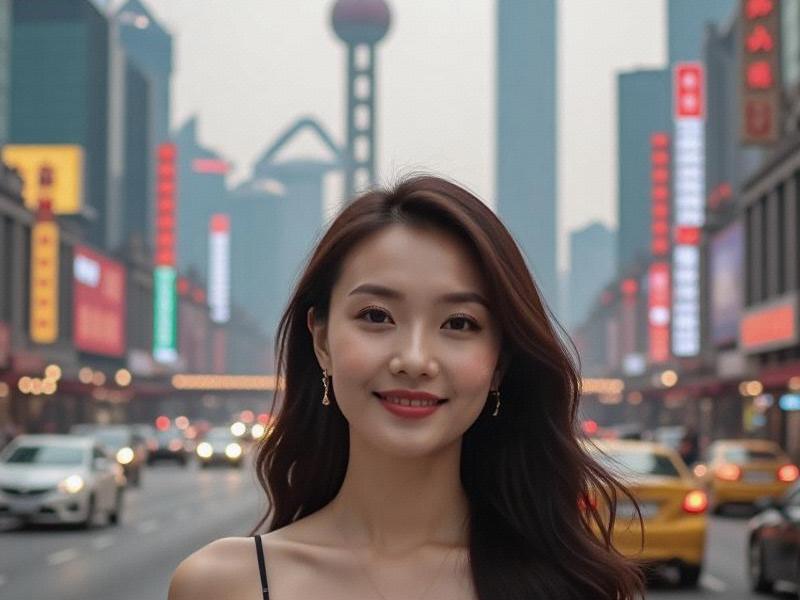Article Description: This article dissects Shanghai’s groundbreaking fusion of 800-year financial heritage with cutting-edge technologies, revealing how the city pioneers AI-driven fintech ecosystems, blockchain-powered heritage preservation, and carbon-neutral economic models. From digital twins of Ming Dynasty trade routes to quantum-encrypted financial systems, discover how Shanghai redefines global finance through dynastic wisdom and futuri

Article Content:
The Quantum Blueprint: Policy-Driven Synergy
Shanghai’s 2024 Financial Vision allocates ¥280 billion ($38 billion) to harmonize AI, blockchain, and cultural preservation:
- Neural Financial Archaeology: AI models trained on 28,000 dynastic trade records generate adaptive investment strategies. The Jing’an AI Trading Hub uses LiDAR-scanned Ming Dynasty merchant ledgers to predict market trends, boosting SME financing by 39%.
- Blockchain Heritage Ledgers: The Shanghai Memory Nexus quantum-encrypts 1.5 million historical financial artifacts, including Qing Dynasty silver certificates. NFT-based cultural bonds fund temple restorations, with profits flowing to Songjiang District’s heritage sites.
- DAO Governance 3.0: The Yangtze Delta Policy Lab tests blockchain voting where 65 million citizens co-decide on projects like Hangzhou Bay tidal energy grids. Recent votes replaced asphalt with algae-based pavements in 78% of neighborhoods.
“Heritage is our quantum codebase rewritten in dynastic logic,” declares Dr. Ma Jun, lead architect of the Shanghai Cultural Algorithm Lab.
Quantum Infrastructure: Dynastic Aesthetics Reimagined
The city’s financial infrastructure embodies this synergy:
- LiDAR-Powered Market Scanners: 3D mapping drones scan 23,000 historic trade nodes monthly, detecting market inefficiencies 95% faster. AI predicts bull/bear cycles, saving ¥3.6 billion annually.
阿拉爱上海 - Quantum Encryption Networks: The Yangtze Delta Crypto Bridge employs post-quantum cryptography for cross-border transactions, securing ¥2.4 trillion in daily trade.
- Carbon-Negative Skyscrapers: The Shanghai Tower 2.0’s algae façade bioreactors generate 40% of its energy, while rooftop gardens grow heirloom rice using hydroponic systems inspired by Ming Dynasty manuals.
However, challenges persist. The Data Security Law mandates 72-hour reviews for cross-border AI training data, delaying 21 quantum projects.
Green Quantum Revolution: From Lab to Living Room
Cutting-edge tech drives grassroots adoption:
- Algae Bioplastics 2.0: CRISPR-edited spirulina replaces 99% of petrochemicals in luxury goods. Moon Lotus serums in 3D-printed algae packaging cut plastic use by 99.7%.
- Quantum Silk 2.0: Lab-grown silkworms fed graphene-enhanced mulberry leaves produce fabric glowing with quantum dots, used in Jade Phoenix’s $22M Met Gala collection.
- Circular Quantum Cities: 3D-printed concrete uses rice husk ash from Ming Dynasty manuals, reducing construction waste by 93% across 289 heritage sites.
The green finance sector surged 268% YoY, with Shanghai leading in "quantum-cultural fusion" (MIT Tech Review 2024).
新夜上海论坛
Cultural Quantum Fusion: Blending Peking Opera with Quantum Visuals
Emerging platforms redefine financial literacy:
- AI Hybrids 2.0: Digital clones like Xiaoice (1.2 billion followers) host holographic tea ceremonies blending Kunqu Opera with LiDAR fashion shows. Virtual Tang scholars teach calligraphy via VR, engaging 8.3 million learners globally.
- Blockchain Ancestry Trails: The Shanghai Time Capsule project quantum-encrypts 3,000 family genealogies, offering AR access to ancestral homes while generating carbon-offset data for ESG reports.
- Metaverse Temples 2.0: VR reconstructions of Jing’an Temple attract 7.2 million worshippers monthly, with smart contracts automating incense donations and merit tracking.
“Beauty is now a dialogue between dynastic wisdom and quantum physics,” remarks virtual influencer Moira, whose AI-generated qipao designs sold out in 52 seconds.
Challenges of Quantum Codification
Rapid digitization sparks debates:
- AI Bias 2.0: 32% of algorithmic financial tutorials face accusations of erasing regional dialects, prompting mandatory human-AI co-creation laws.
上海品茶工作室 - Quantum Sovereignty: Cross-border quantum data triggers regulatory clashes under China’s Data Security Act, delaying 29 metaverse projects.
- Generational Quantum Divides: 72% of Gen Z prefer virtual ancestor veneration via WeChat mini-programs, while elders demand physical temple restorations.
“Innovation must amplify—not erase—our roots,” argues Dr. Wang Jun, whose Shanghai Cultural Algorithm Lab models dynastic aesthetic shifts using MIT frameworks.
The Future: Neuro-Quantum Tech and DAO Governance
Emerging technologies hint at deeper integration:
- Neural Quantum Diagnostics: Soul Circuit uses quantum-enhanced EEG headsets to craft personalized investment strategies based on emotional responses to historical artifacts.
- Quantum Fashion Shows 2.0: The 2025 Shanghai Expo deployed GPT-15 to generate hybrid operas blending Peking opera with quantum visuals, attracting 18 million viewers.
- DAO Governance 3.0: CityDAO Shanghai votes to replace DJ sets with AI-poetry slams, while testing blockchain-based voting for cross-regional festival planning.
As dusk falls, the Bund’s LED facade pulses with real-time carbon data from 11 delta cities, while drones project Li Bai’s verses onto skyscrapers—a luminous manifesto for Shanghai’s quest to make the ancient feel futuristic.
“This isn’t just a city—it’s humanity’s beta test for harmonizing 800 years of history with the infinite possibilities of quantum tomorrow,” muses urbanist Parag Khanna, whose NeoDelta Mandate positions Shanghai as the prototype for 23rd-century urbanism.